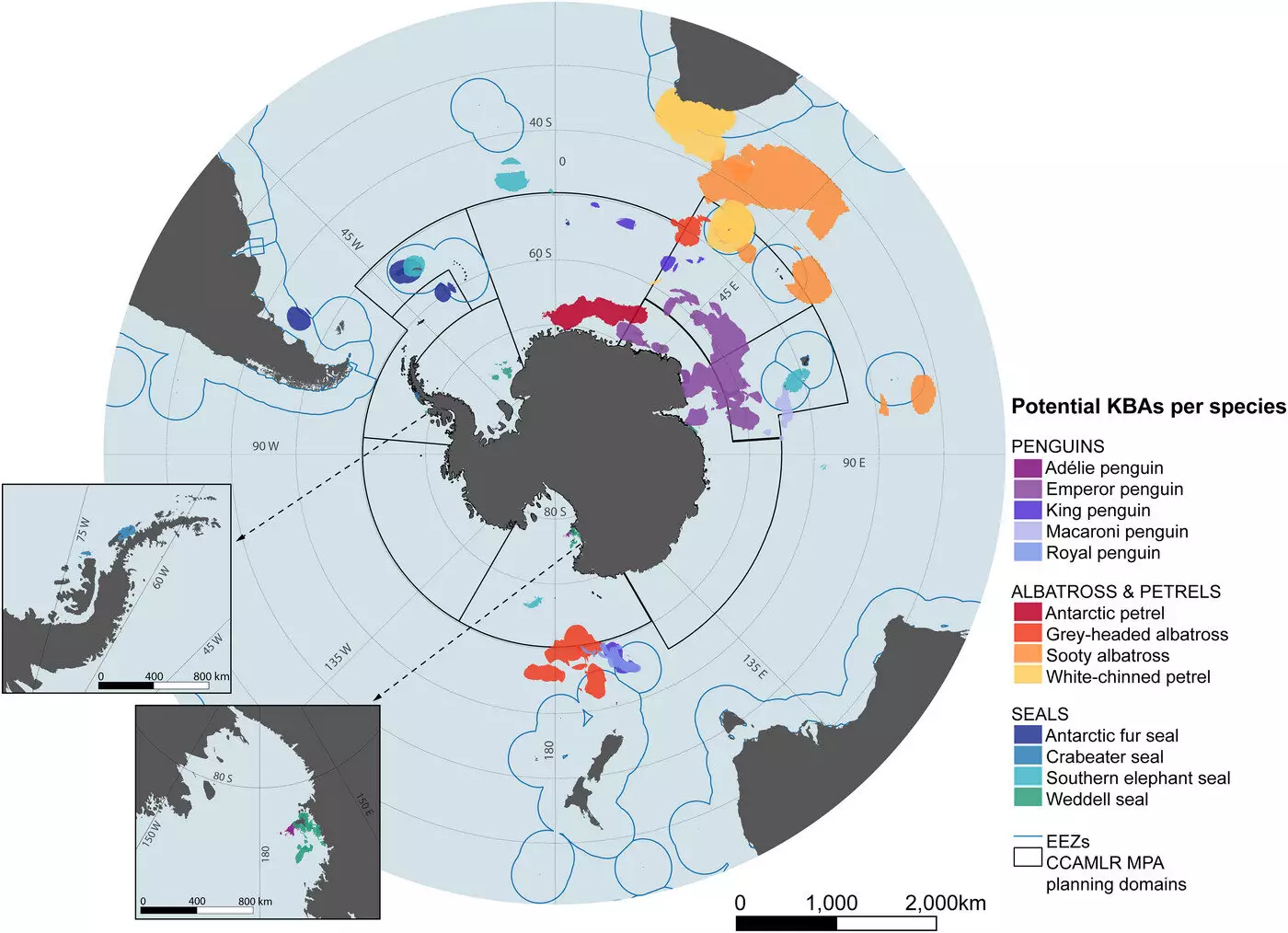The Southern Ocean surrounding Antarctica is home to a diverse range of wildlife, with many species playing critical roles in the ecosystem. However, human activities such as fishing and tourism are putting increasing pressure on these fragile habitats. A team of scientists led by the University of Colorado Boulder has identified 30 new areas that are crucial for conserving biodiversity in the Southern Ocean. Without greater protection in these areas, native wildlife could face significant population declines.
The harsh conditions in Antarctica and the Southern Ocean have historically protected biodiversity from human activities. However, as climate change warms the planet and melts sea ice, fishing and tourism have increased in the region. These activities not only compete with wildlife for resources but also introduce stress, invasive species, and diseases that native wildlife is ill-equipped to handle. It is essential to identify Key Biodiversity Areas (KBAs) where species depend on for their populations to persist.
The team of researchers, led by Sarah Becker and Cassandra Brooks, utilized existing tracking data for 13 Antarctic and sub-Antarctic seabirds and seals to identify 30 KBAs across the Southern Ocean. These areas serve as crucial marine habitats where species travel to for foraging, breeding, and migration. Unlike previous large-scale conservation efforts, this study focused on the specific needs of individual populations, considering their unique life stages and migration patterns.
The findings of this research have significant implications for international bodies and governments involved in conservation planning. By focusing on key biodiversity areas, it is possible to reduce fishing or tourism interactions in these critical habitats, giving native species the best chance of adapting and becoming resilient to climate change. The researchers hope that these findings will be considered when developing conservation strategies and determining areas where fishing should be restricted.
The Southern Ocean plays a crucial role in mitigating climate change by capturing 40% of human-generated carbon dioxide emissions globally and 60-90% of the excess heat from climate change. The health of the Southern Ocean is connected to the well-being of ecosystems around the world, demonstrating the importance of preserving biodiversity in this region.
The identification of Key Biodiversity Areas in the Southern Ocean is a crucial step towards conserving native wildlife and protecting fragile ecosystems in the face of increasing human activities and climate change. By recognizing the specific needs of individual species and focusing on key habitats, we can help preserve the biodiversity of the Southern Ocean for future generations.


Leave a Reply